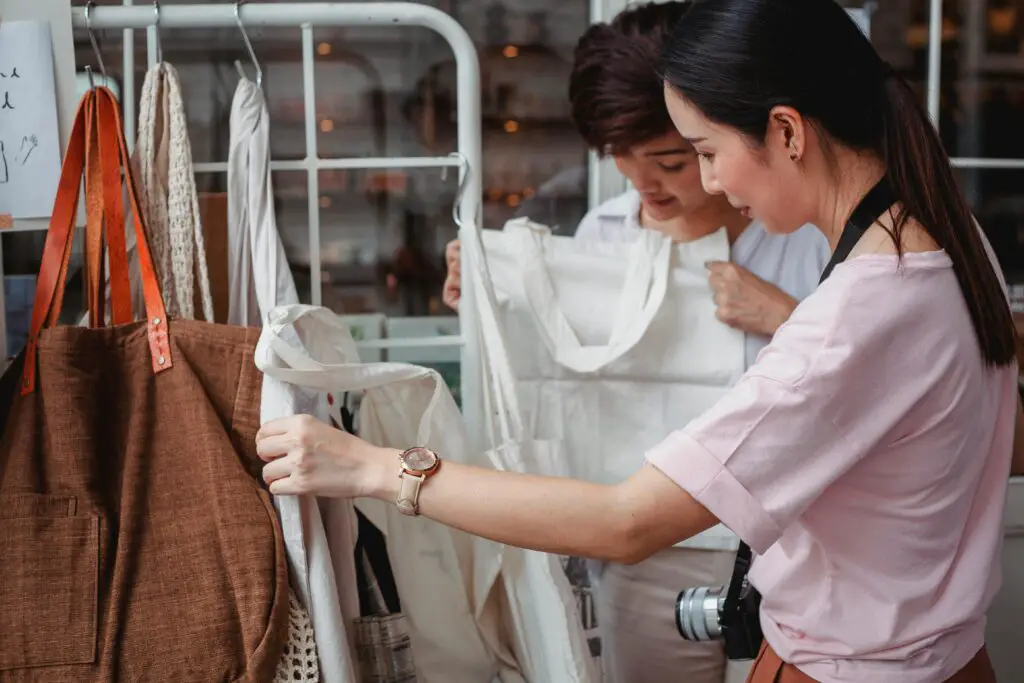
In recent years, there’s been a growing awareness of the environmental and social impacts of the fashion industry.
As a result, more people are turning towards sustainable fashion—a movement that emphasizes eco-friendly materials, ethical labor practices, and sustainable production methods.
If you’re new to the concept of sustainable fashion, this beginner’s guide will help you understand its importance and how you can make more conscious choices in your wardrobe.
What is Sustainable Fashion?
Sustainable fashion might sound intimidating, but it’s all about making conscious choices about what we wear. Think of it as giving your wardrobe an eco-friendly makeover!
Sustainable fashion is all about making clothing in ways that are kind to the environment and fair to the people who make it.
This means using materials like organic cotton, hemp, and recycled polyester, which are better for the planet because they use fewer chemicals and resources. Plus, it’s about ensuring the people who make our clothes are treated fairly.
What is Conventional Fashion?
Unlike sustainable fashion, Conventional fashion ove those synthetic fabrics and thirsty cotton that soak up water like nobody’s business.
Plus, all that mass production? It spells disaster for the environment, with pollution and waste overflowing from those factories. And let’s not forget the folks making our clothes – they often deal with unfair wages and rough working conditions.
Fast fashion, a big player in this game, is all about churning out cheap clothes meant to be tossed after two uses. Sustainable fashion flips the script, though. It’s about looking good without trashing the planet or exploiting people.
The 7 R’s of Sustainable Fashion
Adopting sustainable fashion practices can make a meaningful difference. Let’s explore the 7 R’s of sustainable fashion and how you can integrate them into your wardrobe choices.
- Reduce
The first step towards sustainable fashion is reducing consumption. Instead of succumbing to fast fashion trends that promote frequent shopping, opt for timeless pieces that are durable and well-made.
Buying less and focusing on quality over quantity reduces waste and lessens your environmental footprint.
- Reuse
Make the most of what you already own by creatively reusing your clothing items. Mix and match different pieces to create new outfits, or swap clothes with friends to refresh your wardrobe without buying new ones.
This not only extends the life of your garments but also reduces the demand for new clothing production.
- Recycle
Recycling your clothes can give them a new purpose when they reach the end of their wearable life. Many fabrics can be recycled into new materials, reducing the need for virgin resources and minimizing textile waste.
Look for clothing recycling programs or donate your old clothes to organizations that repurpose textiles.
- Repair
Learning basic clothing repair skills can significantly extend the lifespan of your wardrobe. From sewing on buttons to patching holes, simple repairs can make your clothes last much longer.
Investing in the longevity of your garments reduces the frequency of replacements and supports a more sustainable fashion cycle.
- Repurpose
Get creative with old clothes that no longer serve their original purpose. Upcycle an old shirt into a tote bag, turn worn-out jeans into shorts, or transform a dress into a skirt.
Repurposing textiles not only reduces waste but also gives new life to items that might otherwise be discarded.
- Rent
Consider renting clothes for special occasions or when you want to try out new styles. Renting allows you to enjoy fashion without the long-term commitment and environmental impact of owning more clothes.
It’s a sustainable way to access a variety of outfits without contributing to fashion waste.
- Research
Educate yourself about sustainable fashion practices and the impact of your clothing choices. Look for brands that prioritize ethical production, use eco-friendly materials, and promote transparency in their supply chains.
By supporting responsible fashion brands, you can align your wardrobe with your values and contribute to a more sustainable industry.
By adopting these 7 R’s into your fashion routine, you can make a positive impact on the environment and support a more ethical approach to clothing.
What are SDGs (Sustainable Development Goals)?
The Sustainable Development Goals (SDGs) are a set of 17 global objectives established by the United Nations in 2015.
They are designed to address the world’s most pressing challenges, including poverty, inequality, climate change, environmental degradation, peace, and justice.
Each goal has specific targets to be achieved by 2030, aiming to create a more sustainable and equitable future for all.
Sustainable fashion aligns closely with several SDGs by focusing on environmental responsibility, ethical production, and social justice.
It promotes responsible consumption and production (Goal 12) through waste reduction, recycling, and circular economy principles. Addressing climate action (Goal 13), it advocates for lower carbon emissions, eco-friendly materials, and energy-efficient processes.
Ethical labor practices support decent work and economic growth (Goal 8), benefiting workers worldwide, while efforts in poverty alleviation and gender equality (Goals 1 and 5) enhance opportunities for marginalized communities.
By promoting biodiversity conservation and sustainable resource use (Goals 14 and 15), sustainable fashion contributes to a more equitable global economy, encouraging conscious choices that benefit both people and the planet.
Is Sustainable Fashion Good or Bad?
Sustainable fashion offers numerous benefits across environmental, economic, and social dimensions, making it a positive force for change in the industry.
Using eco-friendly materials and reducing waste through recycling and upcycling, sustainable fashion minimizes carbon emissions and conserves natural resources. These practices promote biodiversity, combat climate change, and create a more sustainable environment.
Ethical labor practices ensure fair wages and safe working conditions for garment workers, fostering dignity and rights within the industry. Supporting fair trade and local artisans enhances community development and economic growth, particularly in developing countries.
Sustainable fashion thus promotes social equity and responsible business practices globally.
Challenges and Criticisms of Sustainable Fashion
Despite its positive intentions and benefits, sustainable fashion faces several challenges and criticisms that impact its widespread adoption and effectiveness.
Sustainable fashion often comes at a higher price due to eco-friendly materials and ethical production practices, limiting accessibility for budget-conscious consumers. This cost barrier hinders widespread adoption and impact.
Many brands engage in greenwashing, making false or exaggerated sustainability claims. This practice misleads consumers and undermines genuine efforts towards environmental and social responsibility.
Rapidly changing fashion trends encourage frequent purchases and contribute to waste. Sustainable fashion must innovate to meet consumer demands while maintaining ethical and eco-friendly practices, balancing sustainability with style and market dynamics.
Practical Tips for Embracing Sustainable Fashion
Embracing sustainable fashion starts with simple steps for beginners.
How to Start
Evaluate your wardrobe and repurpose or donate unused items. Choose timeless, eco-friendly garments like organic cotton or recycled fabrics.
Building a Sustainable Wardrobe
Prioritize durability and versatility. Look for brands with transparent supply chains and certifications like Fair Trade or GOTS. Consider second-hand or vintage options.
Brands and Resources
Follow sustainable fashion blogs and brands with ethical practices. Seek certifications and endorsements for trustworthy choices.
Conclusion
To embrace sustainable fashion, focus on choosing timeless, eco-friendly garments and supporting transparent brands. Start by assessing your wardrobe and opting for sustainable materials.
Small steps like choosing second-hand options or following sustainable influencers can make a meaningful impact. Let’s make thoughtful choices that align with our values for a more sustainable fashion future.
